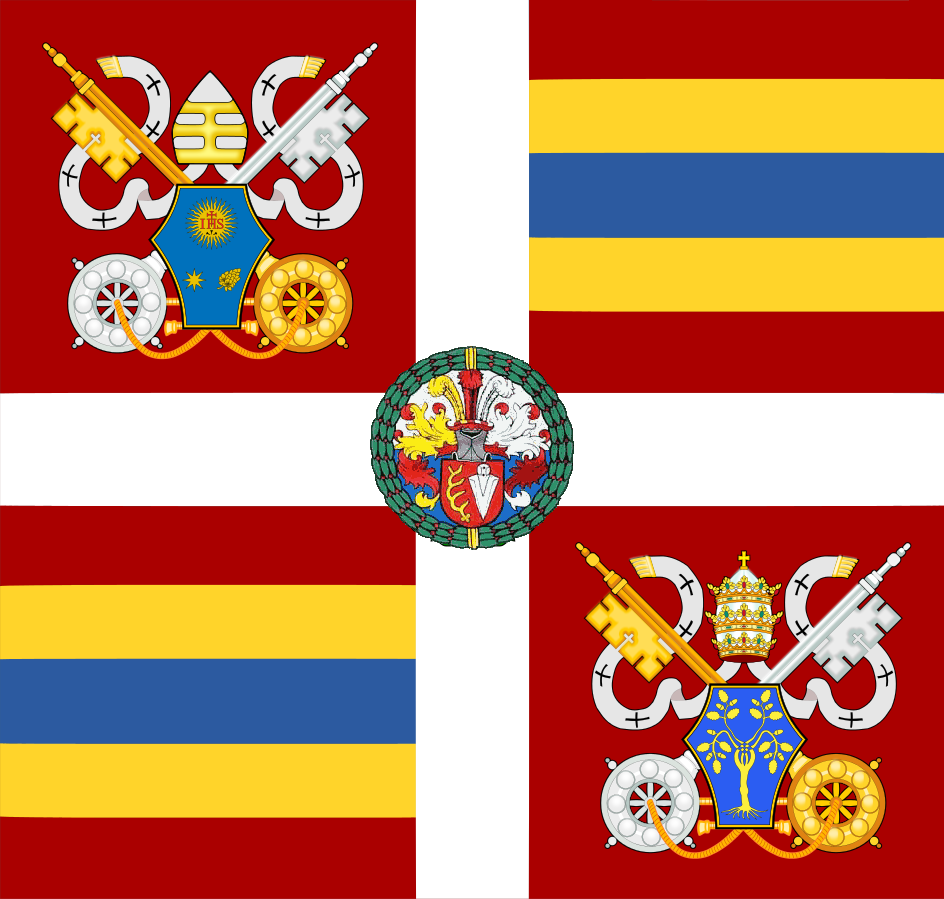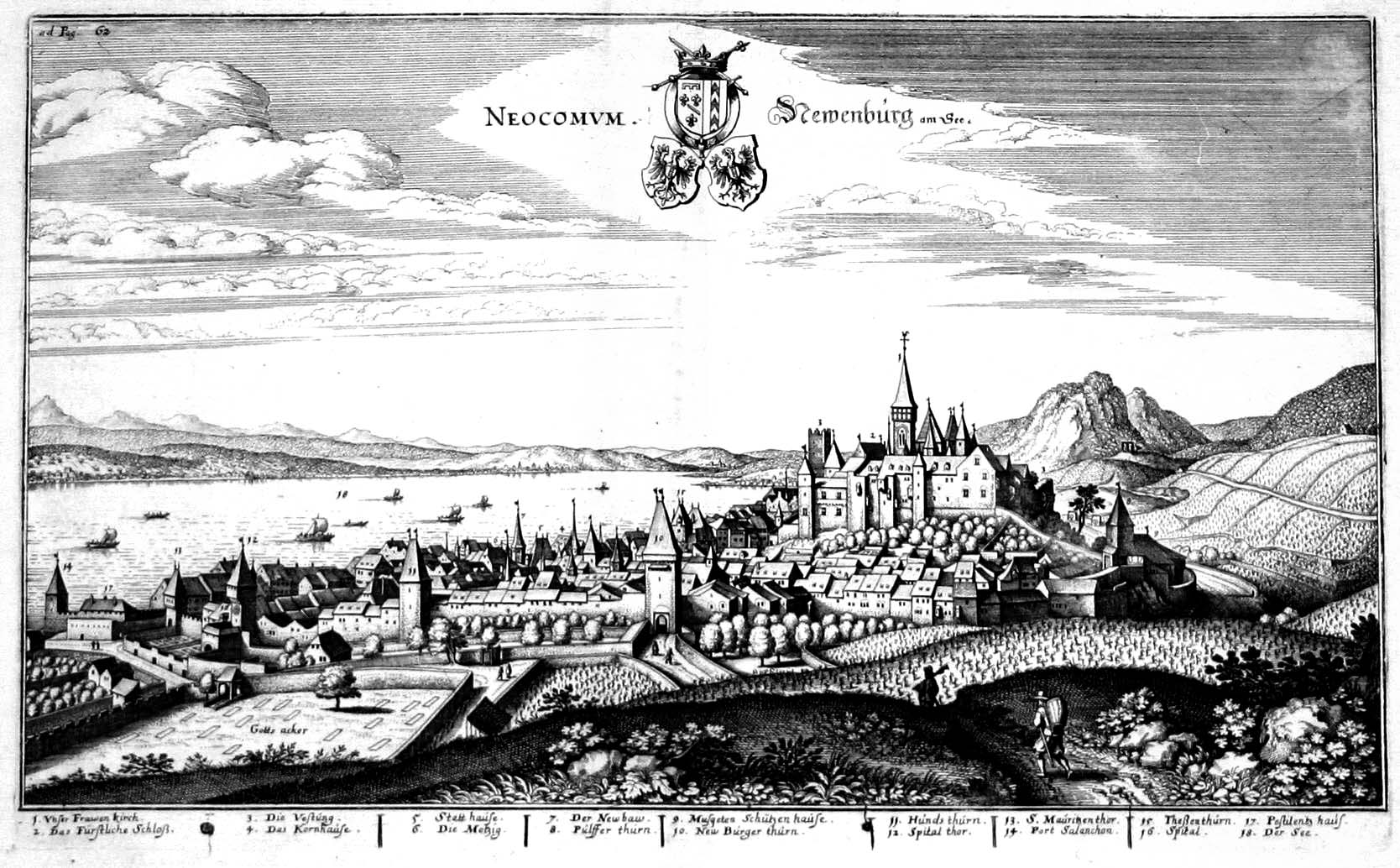|
Oberdiessbach Castle
Oberdiessbach Castle (also called Neues Schloss) is a castle in the municipality of Oberdiessbach of the Canton of Bern in Switzerland. It is a Swiss heritage site of national significance. History The town of Oberdiessbach (known as Diessbach until 1870) was the center of the late medieval ''Herrschaft'' of Diessbach. The first castle in the area, Diessenberg on the Falkenfluh was built above the town and destroyed in 1331. In 1546 Niklaus von Diesbach built the ''Alte Schloss'' (Old Castle) on the valley floor near the town. In 1666, near the Old Castle, construction began on the ''Neue Schloss'' or New Castle for Albrecht von Wattenwyl (1617-1671). Albrecht von Wattenwyl had been a commander of the Swiss Guard in service to the French king. So, he had the castle built in the French late Renaissance style. It was built by Neuchâtel architect Jonas Favre. The castle exterior remained generally unchanged after initial construction finished in 1668. The only major cha ... [...More Info...] [...Related Items...] OR: [Wikipedia] [Google] [Baidu] |
Oberdiessbach
Oberdiessbach is a Municipalities of Switzerland, municipality in the Bern-Mittelland (administrative district), Bern-Mittelland administrative district in the Cantons of Switzerland, canton of Bern (canton), Bern in Switzerland. On 1 January 2010 the former municipality of Aeschlen and on 1 January 2014, Bleiken bei Oberdiessbach merged into the municipality of Oberdiessbach.Amtliches Gemeindeverzeichnis der Schweiz published by the Swiss Federal Statistical Office accessed 12 December 2013 History [...More Info...] [...Related Items...] OR: [Wikipedia] [Google] [Baidu] |
Castle
A castle is a type of fortification, fortified structure built during the Middle Ages predominantly by the nobility or royalty and by Military order (monastic society), military orders. Scholars usually consider a ''castle'' to be the private fortified house, fortified residence of a lord or noble. This is distinct from a mansion, palace, and villa, whose main purpose was exclusively for ''pleasance'' and are not primarily fortresses but may be fortified. Use of the term has varied over time and, sometimes, has also been applied to structures such as hill forts and 19th- and 20th-century homes built to resemble castles. Over the Middle Ages, when genuine castles were built, they took on a great many forms with many different features, although some, such as curtain wall (fortification), curtain walls, arrowslits, and portcullises, were commonplace. European-style castles originated in the 9th and 10th centuries after the fall of the Carolingian Empire, which resulted ... [...More Info...] [...Related Items...] OR: [Wikipedia] [Google] [Baidu] |
Municipalities Of Switzerland
Municipalities (, ' or '; ; ; ) are the lowest level of administrative division in Switzerland. Each municipality is part of one of the Swiss cantons, which form the Swiss Confederation. In most cantons, municipalities are also part of districts or other sub-cantonal administrative divisions. There are 2,121 municipalities . Their populations range between several hundred thousand (Zürich), and a few dozen people ( Kammersrohr, Bister), and their territory between 0.32 km² ( Rivaz) and 439 km² ( Scuol). History The beginnings of the modern municipality system date back to the Helvetic Republic. Under the Old Swiss Confederacy, citizenship was granted by each town and village to only residents. These citizens enjoyed access to community property and in some cases additional protection under the law. Additionally, the urban towns and the rural villages had differing rights and laws. The creation of a uniform Swiss citizenship, which applied equally for citizens of the ... [...More Info...] [...Related Items...] OR: [Wikipedia] [Google] [Baidu] |
Canton Of Bern
The canton of Bern, or Berne (; ; ; ), is one of the Canton of Switzerland, 26 cantons forming the Switzerland, Swiss Confederation. Its capital city, Bern, is also the ''de facto'' capital of Switzerland. The bear is the heraldic symbol of the canton, displayed on a red-yellow background. Comprising Subdivisions of the canton of Bern, ten districts, Bern is the second-largest canton by both surface area and population. Located in west-central Switzerland, it is surrounded by eleven cantons. It borders the cantons of canton of Jura, Jura and canton of Solothurn, Solothurn to the north. To the west lie the cantons of canton of Neuchâtel, Neuchâtel, canton of Fribourg, Fribourg, and canton of Vaud, Vaud. To the south lies the cantons of canton of Valais, Valais. East of the canton of Bern lie the cantons of Canton of Uri, Uri, Canton of Nidwalden, Nidwalden, Canton of Obwalden, Obwalden, Canton of Lucerne, Lucerne and Canton of Aargau, Aargau. The geography of the canton includes ... [...More Info...] [...Related Items...] OR: [Wikipedia] [Google] [Baidu] |
Switzerland
Switzerland, officially the Swiss Confederation, is a landlocked country located in west-central Europe. It is bordered by Italy to the south, France to the west, Germany to the north, and Austria and Liechtenstein to the east. Switzerland is geographically divided among the Swiss Plateau, the Swiss Alps, Alps and the Jura Mountains, Jura; the Alps occupy the greater part of the territory, whereas most of the country's Demographics of Switzerland, 9 million people are concentrated on the plateau, which hosts List of cities in Switzerland, its largest cities and economic centres, including Zurich, Geneva, and Lausanne. Switzerland is a federal republic composed of Cantons of Switzerland, 26 cantons, with federal authorities based in Bern. It has four main linguistic and cultural regions: German, French, Italian and Romansh language, Romansh. Although most Swiss are German-speaking, national identity is fairly cohesive, being rooted in a common historical background, shared ... [...More Info...] [...Related Items...] OR: [Wikipedia] [Google] [Baidu] |
Late Middle Ages
The late Middle Ages or late medieval period was the Periodization, period of History of Europe, European history lasting from 1300 to 1500 AD. The late Middle Ages followed the High Middle Ages and preceded the onset of the early modern period (and in much of Europe, the Renaissance). Around 1350, centuries of prosperity and growth in Europe came to a halt. A series of famines and Plague (disease), plagues, including the Great Famine of 1315–1317 and the Black Death, reduced the population to around half of what it had been before the calamities. Along with depopulation came social unrest and endemic warfare. Kingdom of France, France and Kingdom of England, England experienced serious peasant uprisings, such as the Jacquerie and the Peasants' Revolt, as well as over a century of intermittent conflict, the Hundred Years' War. To add to the many problems of the period, the unity of the Catholic Church was temporarily shattered by the Western Schism. Collectively, those events ar ... [...More Info...] [...Related Items...] OR: [Wikipedia] [Google] [Baidu] |
Herrschaft (territory)
The German term ''Herrschaft'' (plural: ''Herrschaften'') covers a broad semantic field and only the context will tell whether it means, "rule", "power", "dominion", "authority", "territory" or "lordship". In its most abstract sense, it refers to power relations in general while more concretely it may refer to the individuals or institutions that exercise that power. Finally, in a spatial sense in the Holy Roman Empire, it refers to a territory over which this power is exercised.Rachel Renaul "Herrschaft", ''Histoire du Saint-Empire'' The Herrschaft as a territory The ''Herrschaft'', whose closest equivalent was the French '' seigneurie'', usually translated as "lordship" in English, denoted a specific area of land with rights over both the soil and its inhabitants. While the lord ('' Herr'') was often a noble, it could also be a commoner such as a burgher, or a corporate entity such as a bishopric, a cathedral chapter, an abbey, a hospice or a town. Most lordships were ''med ... [...More Info...] [...Related Items...] OR: [Wikipedia] [Google] [Baidu] |
Swiss Guard
The Pontifical Swiss Guard,; ; ; ; , %5BCorps of the Pontifical Swiss Guard%5D. ''vatican.va'' (in Italian). Retrieved 19 July 2022. also known as the Papal Swiss Guard or simply Swiss Guard,Swiss Guards , History, Vatican, Uniform, Requirements, Weapons, & Facts , Britannica is an armed forces, guard of honour, and protective security unit, maintained by the Holy See to protect the Pope and the Apostolic Palace within the territory of the Vatican City State. Established in 1506 under Pope Julius II, it is among the List of oldest military units and formations in continuous operation, oldest military units in continuous operation and is sometimes called "the world's smallest army". The Swiss Guard is recognised by its Renaissance-era Full dress uniform, dress uniform, consisting of a tunic striped in red, dark blue, and yellow; high plumed helmet; and traditional weapons such as the halberd. Guardsmen perform their protective duties in functional attire and with modern fire ... [...More Info...] [...Related Items...] OR: [Wikipedia] [Google] [Baidu] |
Renaissance Architecture
Renaissance architecture is the European architecture of the period between the early 15th and early 16th centuries in different regions, demonstrating a conscious revival and development of certain elements of Ancient Greece, ancient Greek and Ancient Rome, Roman thought and material culture. Stylistically, Renaissance architecture followed Gothic architecture and was succeeded by Baroque architecture and neoclassical architecture. Developed first in Florence, with Filippo Brunelleschi as one of its innovators, the Renaissance style quickly spread to other Italian cities. The style was carried to other parts of Europe at different dates and with varying degrees of impact. It began in Florence in the early 15th century and reflected a revival of classical Greek and Roman principles such as symmetry, proportion, and geometry. This movement was supported by wealthy patrons, including the Medici family and the Catholic Church, who commissioned works to display both religious devot ... [...More Info...] [...Related Items...] OR: [Wikipedia] [Google] [Baidu] |
Neuchâtel
Neuchâtel (, ; ; ) is a list of towns in Switzerland, town, a Municipalities of Switzerland, municipality, and the capital (political), capital of the cantons of Switzerland, Swiss canton of Neuchâtel (canton), Neuchâtel on Lake Neuchâtel. Since the fusion in 2021 of the municipalities of Neuchâtel, Corcelles-Cormondrèche, Peseux, Neuchâtel, Peseux, and Valangin, the city has approximately 33,000 inhabitants (80,000 in the metropolitan area). The city is sometimes referred to historically by the German name ; both the French and German names mean "New Castle". The castle after which the city is named was built by Rudolph III of Burgundy and completed in 1011. Originally part of the Kingdom of Burgundy, the city was absorbed into the Holy Roman Empire in 1033. The domain of the counts of Neuchatel was first referred to as a city in 1214. The city came under Prussian control from 1707 until 1848, with an interruption during the Napoleonic Wars from 1806 to 1814. In 1848, ... [...More Info...] [...Related Items...] OR: [Wikipedia] [Google] [Baidu] |
English Landscape Garden
The English landscape garden, also called English landscape park or simply the English garden (, , , , ), is a style of "landscape" garden which emerged in England in the early 18th century, and spread across Europe, replacing the more formal, symmetrical French formal garden which had emerged in the 17th century as the principal gardening style of Europe. The English garden presented an idealized view of nature. Created and pioneered by William Kent and others, the "informal" garden style originated as a revolt against the architectural garden and drew inspiration from landscape paintings by Salvator Rosa, Claude Lorrain, and Nicolas Poussin, as well as from the classic Chinese gardens of the East, which had recently been described by European travellers and were realized in the Anglo-Chinese garden.Bris, Michel Le. 1981. ''Romantics and Romanticism.'' Skira/Rizzoli International Publications, Inc. New York 1981. 215 pp. age 17Tomam, Rolf, editor. 2000. ''Neoclassicism ... [...More Info...] [...Related Items...] OR: [Wikipedia] [Google] [Baidu] |









